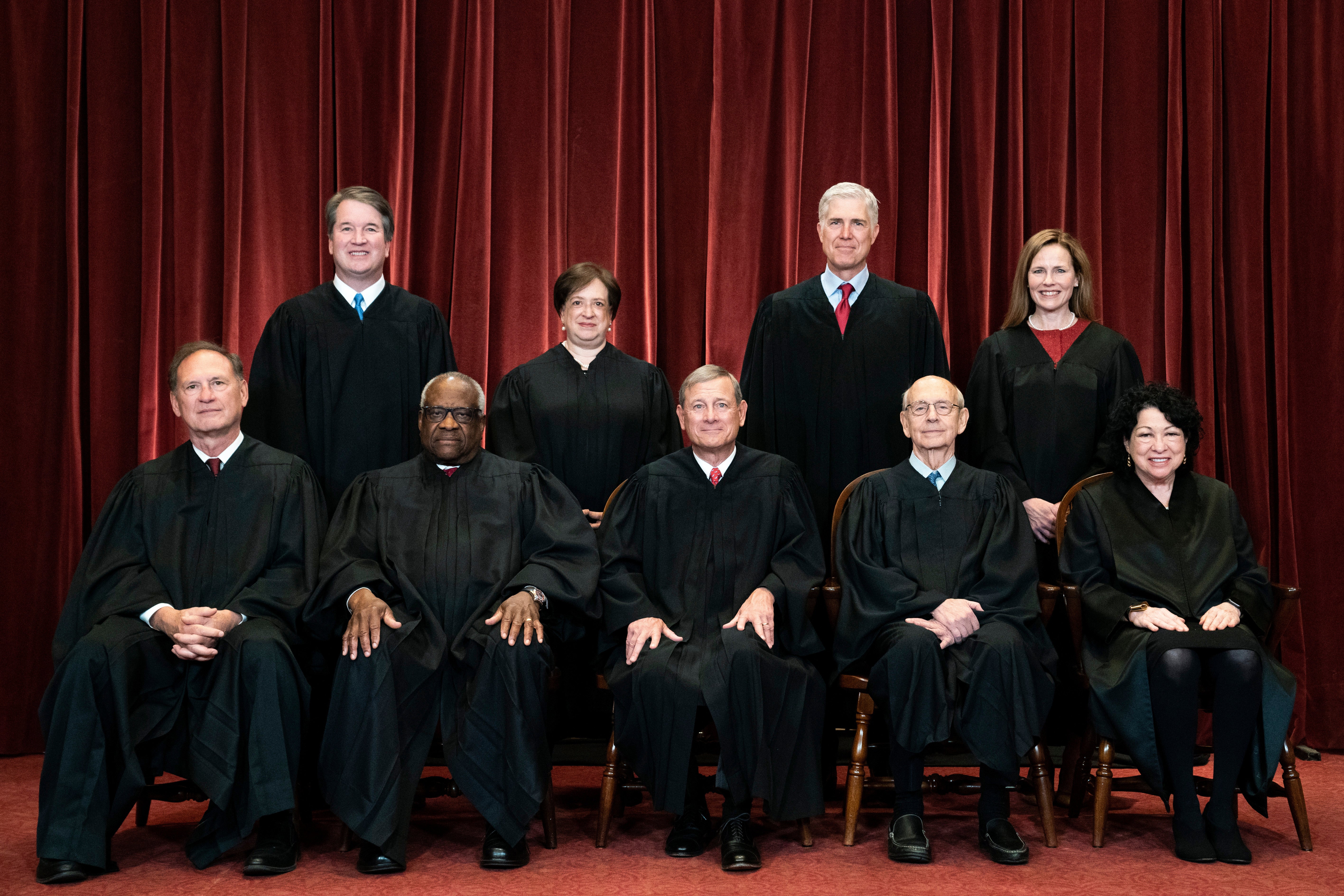Who voted to overturn Roe v Wade and what is the political make up of the Supreme Court?
A breakdown of which judges on SCOTUS are part of the conservative supermajority, which are in the liberal minority, and who voted to make abortion unconstitutional

On Friday, the US Supreme Court overturned the landmark ruling, Roe v Wade, that gave women the constitutional right to abortion for the last 50 years. Now, in the wake of this living nightmare for millions of Americans, many are wondering how we got here.
Specifically, many are wondering how the Supreme Court can do this and who’s to blame for women in the US having less rights, for the first time in modern history, than their mothers and grandmothers. To fully understand, you have to know the answers to a few important questions.
What does the political divide on the Supreme Court currently look like?
The Supreme Court is currently comprised of a six-justice conservative supermajority. As The Independent’s own John Bowden explained earlier this year, those justices include: Justices Samuel Alito, Clarence Thomas, Amy Coney Barrett, Neil Gorsuch and Brett Kavanaugh, as well as Chief Justice John Roberts. Of those six, three – Ms Barrett, Mr Gorsuch and Mr Kavanaugh – were confirmed under the Trump presidency.
The court’s liberal side includes just Justices Stephen Breyer, Elena Kagan, and Sonia Sotomayor.
How are justices appointed?
The Constitution doesn’t indicate specific requirements for justices, but as Bowden points out in his reporting nominees have historically had “experience at the federal court level either as a justice, attorney, or both in the case of some such as recent addition Neil Gorsuch.”
Judicial appointments then come down to the Senate via the White House and are brought in front of the Senate Judiciary Committee. From there, nominees usually meet privately with senators and then the hearings begin. The hearings are usually several days long and involved senators asking the nominees about their background, competency, beliefs, and more.
Former president Donald Trump notably nominated the most justices on the Supreme Court in a single term since President Richard Nixon and was able to do so for a myriad of reasons.
Despite the February 2016 death of Justice Antonin Scalia taking place during former president Barack Obama’s tenure, the Republican-led Senate at the time refused to allow Obama to follow through on his nominee, Merrick Garland, for the opening.
Trump quickly nominated Gorsuch to succeed Scalia and cemented his first justice on the court. In 2018, Justice Anthony Kennedy retired and opened up the space for Trump to nominate Brett Kavanaugh as his replacement. Rounding out his trio of nominees was Amy Coney Barrett, who replaced Justice Ruth Bader Ginsburg after Ginsburg died in September 2020.
So, who voted to overturn Roe v Wade?
The case announced on Friday, Dobbs v Jackson Women’s Health Organization, was a 5-1-3 decision, which means that five of the nine justices voted to dismantle aborton protections in the US and allow states the power to decide how they govern over reproductive health care.
The ruling was written by Justice Samuel Alito, but was concurred by Justices Clarence Thomas, Neil Gorsuch, Brett Kavanaugh and Amy Coney Barrett.
Chief Justice John Roberts wrote a separate concurrence where he agreed with his colleagues in upholding Mississippi’s 15-week abortion ban in Dobbs , but emphasized he would not have chosen to also overturn Roe. MrRoberts’ separate concurrence isn’t particulary shocking, as he’s notably been a swing vote in “some key cases,” as The Independent’s John Bowden reported earlier this year.
A recent example was in 2012 when Mr Roberts “sided with the liberal wing in a 5-4 decision to uphold a central provision in Mr Obama’s Affordable Care Act, better known as Obamacare, thereby saving the law from its most serious legal challenge.”
Who didn’t vote to overturn Roe?
A joint dissent was filed by the liberal minority of Justices Stephen Breyer, Elena Kagan and Sonia Sotomayor, who wrote in their opinion: “With sorrow – for this Court, but more, for the many millions of American women who have today lost a fundamental constitutional protection – we dissent.”
“[The court’s decision] eliminates a 50-year-old constitutional right that safeguards women’s freedom and equal station,” reads the justices’ dissention. “It breaches a core rule-of-law principle, designed to promote constancy in the law. In doing all of that, it places in jeopardy other rights, from contraception to same-sex intimacy and marriage. And finally, it undermines the Court’s legitimacy.”
Join our commenting forum
Join thought-provoking conversations, follow other Independent readers and see their replies
Comments
Bookmark popover
Removed from bookmarks